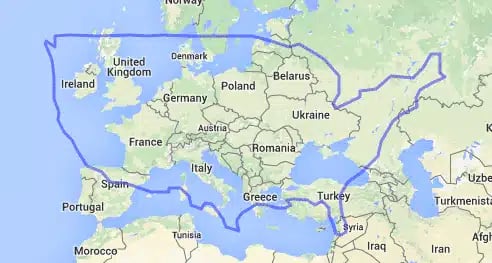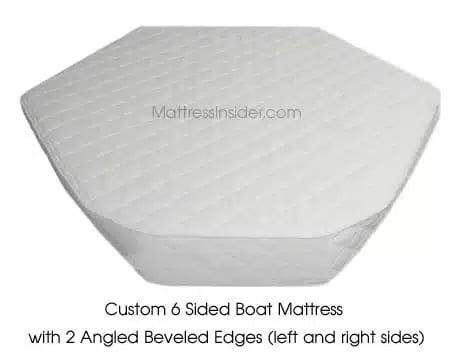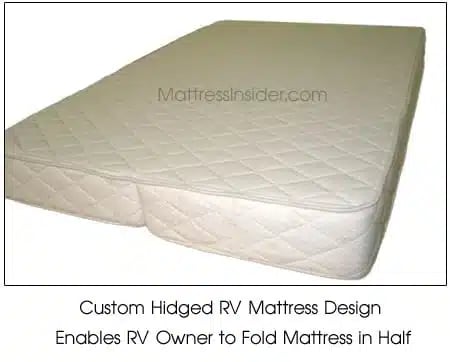Replacing Your European Size Mattress
If you’re trying to find a mattress to fit your European size bed, or if you’re curious about what a European size mattress might look like, you’ve come to the right place!!
We have customers from all over the world calling us with questions related to their mattresses.
Some people who call us have moved to the United States from other countries – often from Europe.
Many are looking to replace their European size mattress, others are simply wanting to understand the differences and similarities in U.S. mattresses (vs. mattresses and mattress sizes in other countries).
There are a few things you may want to consider before you buy any mattress:
- Measuring your mattress for its actual size
- Your personal comfort and style preferences
- How to do research before you buy

Measuring Your Mattress For Its Actual Size
It is very important to measure your mattress for its exact length and width.
Although many European countries (and other parts of the world) use the same names to refer to mattresses, the measurements can be quite different.
So, when your mattress or bed frame (that you bought in Europe) says “Queen size” or “European King”, it can mean a myriad of different sizes. Don’t worry! It’s a lot easier then it sounds. Be lucky you’re not trying to replace a v berth mattress for a yacht bed.
In both the U.K. and the U.S., it will be a different measurement for either of those “European” Sizes.
And for some mattress sizes, they can have a different name entirely.
Stated simply, mattresses vary in size from country to country, so it’s always a good idea to measure. If you don’t measure, you could be very disappointed with how your mattress turns out.
Take a look below to see some examples of “standard size” builds based on names and sizes in the UK, Europe, and the US.
Popular U.K. mattress sizes
- Grand King = 180 cm x 200 cm – 71 in x 79 in
- King = 152 cm x 198 cm – 60 in x 78 in
- Double = 135 cm x 190 cm – 53 in x 75 in
- Single = 90 cm x 190 cm – 35.5 in x 75 in
Popular European mattress sizes:
- Grand King = 180 cm x 200 cm – 71 in x 79 in
- King = 160 cm x 200 cm – 63 in x 79 in
- Double = 140 cm x 200 cm – 55 in x 79 in
- Single = 90 cm x 200 cm – 35.5 in x 79 in
Popular U.S. mattress sizes
- King = 183 cm x 203 cm – 72 in x 80 in
- Queen = 152 cm x 203 cm – 60 in x 80 in
- Full = 135 cm x 191 cm – 53 in x 75 in
- Twin = 97 cm x 191 cm – 38 in x 75 in
Try Our Custom Mattress Builder!
The recommended thickness for optimum comfort is 9"-10".
Other thicknesses from 4"- 8" are usually for special circumstances that require a thinner mattress (ie: overhead cabinets, windows, light switches, sofa sleepers, bunk beds, etc) but will still offer premium support and comfort even at these thinner sizes.
RV Bunk
34" x 74"
Twin
38" x 74"
Twin XL
38" x 80"
RV Full
48" x 74"
Full
53" x 74"
Full XL
53" x 80"
RV Queen
60" x 74"
RV Queen
60" x 80"
RV King
72" x 78"
Short King
72" x 80"
Easter King
76" x 80"

There are big differences between America and Europe, in terms of sizes, when looking at the “name” of the mattress (i.e. queen, king, twin, etc.).
As you can see from the above sizings, in some situations, the size difference can be more than three inches.
Three inches can seem like a small difference in size, but it can be a big problem when you’re trying to get the best fitting mattress.
To make things more difficult, some countries don’t even recognize a “Queen” size.

And although not all countries are represented in the charts above, there are other countries (China, Japan, etc.), which have their own sizes as well.
The good news for you is that we can make them all, as long as we get the correct dimensions from you.
When ordering a mattress, you want it to be right. After all, you likely get to sleep on it every night for the next several years.
Getting the size right is a very important step in getting the right mattress for your needs and preferences!
But do I really have to measure?
Only if you want the mattress to fit your European bed frame! One important thing to note (if you decide to go with another company…) not all mattress companies know the difference between a European, U.K., U.S. or other countries’ sizes. So whether you order from us (or another mattress company), measuring the actual size of your mattress or mattress area will ensure the best fit! Again, a custom mattress maker can only give you an accurate price quote once you know the exact size.
How to measure:
Always measure the inside of your bed frame.
What does it mean to measure the inside of the bed frame?
Measure the width and length of the area your mattress will sit on/in.
You may also want to measure the depth so your mattress can sit inside of your frame at the most comfortable thickness.
What if I have a box spring/platform?
If you have a support (like a box spring or platform), then you may want to measure the dimension of the box spring/platform (if you want the mattress to be the same size as the box), or the platform/springs that the mattress will sit on (if you want the mattress to be the same size as the platform/springs).
Ultimately, if you go with a company (like Mattress Insider) which makes custom European size mattresses, the mattress will be made to your dimensions. So you’ll want to know and give the exact dimensions for the mattress you want.
I’ve heard that memory foam and other kinds of mattresses will expand/contract.
Is that true?
And, do I need to leave room for sheets/blankets?

This really depends on you and your preferences. Memory foam does have a variance of +/- up to an inch. So it may expand or contract based on humidity, barometric pressure, and various other environmental factors (that no one can control). So, depending on what material you choose for your mattress, you may choose to add or remove up to an inch from each measurement to account for expansion and contraction. Also, if you’re wanting to tuck sheets and/or blankets between the rails and the mattress, then you may want to leave a little extra space.
What if my European mattress is a really weird size?
If your measurement comes out to an odd size measurement, round down (instead of up) to the nearest inch.
A good custom size mattress maker will be able to cut your mattress to the nearest inch.
If you need to convert inches to centimeters or centimeters to inches, simply use the conversion tool below…
Note: 1 Inch = 2.54 cm, 1 Feet = 30.48 cm, 1
Feet = 12 Inch
What about the thickness of the mattress?
If you have a frame that the mattress will be sitting inside, or if you want your mattress to be a certain size in terms of height/thickness, you may want to measure the depth or determine a thickness as well.
We can make any size and shape mattress, so if you don’t see your size in any of the selections on the MattressInsider website, don’t worry. Just give us a call with your size! 1.888.488.1468
How to Choose The Comfort Level For Your European Size Mattress:
Most quality mattresses have different layers which determine how the mattress will feel, as well as how long it will retain its original feel over time.
You’ll see us say this throughout our website several times, (and probably hear it from us when you call on the phone) and it’s important to remember.
There are 3 things to look for when buying any mattress.
- comfort
- support, and
- durability.
Generally speaking…
- the layers closest to the bottom of the mattress are for support.
- the layers closer to the top of the mattress are for comfort.
- what those layers are made of (the actual materials) determine the durability of the mattress .
Support Layers
The support in your mattress comes from the layers closest to the bottom of the mattress. Most quality mattress companies (including Mattress Insider) use individual pocketed coils or high density foam for the support layers of the mattress. These layers are what make sure you are completely supported during a long night’s sleep. Having the right support layers in your mattress helps to stop the “bottoming out” effect that can happen with poorly constructed or old mattresses.
Please note: If you or anyone sleeping on the mattress will be over 250 lbs., you will probably want to go with pocketed coils instead of high density foam (in the support layers) for your European size mattress. High density foam will support weight up to 250 lbs, while pocketed coils will support weight up to 300 lbs).
Regardless of which material(s) you choose for the support layers, remember that the bottom layers are what help to and provide you with the support in your mattress.
Questions?
Please call us at 888.488.1468
Comfort Layers
The comfort layers of a mattress are the upper layers. Like many excellent mattress makers, we use different materials, designed to meet your exact comfort preferences. Here are examples of some of the materials we use in the comfort layers.
- Latex is a great comfort layer for those who want a firmer mattress. Latex offers more of a buoyant feeling where you’re on top of the mattress as opposed to in the mattress, which is the case with memory foam. It’s also more eco-friendly then other types of foams. Also, because the latex we use doesn’t retain body heat, it’s a great option for people who tend to sleep warm, but would like a more comfortable night’s sleep.
- Memory foam comes in a variety of densities, which can range from medium firm to very plush.Generally speaking, memory foam contours to your body and is used to make a mattress have a softer feel. Not all memory foam is created alike though!Some memory foams are 100% petroleum based, and tend to not breathe very well. They also can have significant problems with off-gassing. If you’re sensitive to chemicals, 100% petroleum based foams may not be the best option for you. Other memory foams are plant or soy based. These tend to breathe a lot better, sleep cooler, and have minimal to no problems with off-gassing. So be sure to look for foams that are soy or plant based as they are better for you and the environment.For people who know that they naturally sleep very hot and tend to sweat a lot while they sleep, some of the newer memory foams (like gel memory foam) can be a better option to use as the top comfort layer.
- Gel foam is a newer type of memory foam. Gel foam can either include tiny beads of gel in the foam that help to cool the mattress, or can feature gel infused right into the foam itself. Gel sleeps about 1 to 2 degrees cooler than traditional memory foam. Gel foam can be a great comfort layer for those who know they tend to sleep hot and want to sleep a little cooler, but like a more medium to medium soft feel in their mattress.
Questions about European sizes (or custom mattresses)?
Please call us at 888.488.1468
Durability of Materials
(i.e. how long will your mattress last?)
If you’re paying hundreds of dollars for something, you don’t want to have to replace it anytime soon!
And this is true for buying a mattress as well, because you want to know that it will last.
This is where a discussion about warranties comes in.
If you ever read a warranty on anything, you’ll see words like prorated, except, discluding; meaning they only cover certain things, and likely not what you need covered, or for the time you would expect the warranty to cover your purchase.
There are some companies that use cheaper materials in the make up of their mattresses, and you might not even be able to tell the difference when you first lay on the mattress.
Let’s take for example a 3lb memory foam vs. a 4lb memory foam…
If you laid on those two kinds of foam today, you might not even be able to tell a difference. But you would notice a difference in 3-5 years of regular use, because a 3lb foam will not retain its original feel as long as a 4lb memory foam will.
(Just to note it here, all our mattresses come with no less than a 5 year warranty, but most of our mattresses have warranties of 10+ years, and some even come with 20 year warranties!)
What about allergies/sensitivities?
If you’re allergic or sensitive to certain materials commonly used in mattresses, let the maker/seller know!
(Our materials are made in the U.S. and are hypoallergenic, soy based foams, with organic cotton covers.Latex is used in certain mattresses, so if you have an allergy, let us know.)
There are always options when we’re making any mattress for you, including custom sizes for your European bed frame.
We can make pretty much anything here at MattressInsider.


If you have a custom sized bed or European Sized bed frame, we can very likely help.
Call a Mattress Expert
888.488.1468
In summary…
when shopping for European Mattresses some questions to consider include:
- How would you like the mattress to feel? Hard, soft, or somewhere in the middle?
- What do you like and what do you dislike about the mattress that you’re sleeping on now?
- Who will be sleeping on this mattress? (You, family members, guests, etc.)
- Will anyone sleeping on the mattress be over 250 lbs?
- Is the European bed going to be used often or rarely?
- Always measure your exact space to the nearest inch or half inch.
- We can make any size mattress, if the size of your European bed is not listed, call us!
- Decide how you want your mattress to feel. Options can include something softer, firmer, or in between.
- If you have a mattress already that you love, look up the name (usually on the mattress tag). If you’ll call us with the make and model of the mattress you like, we can try to match it for your European bed.
- Will your European size bed need custom sized sheets or a mattress protector? We can also make padded toppers, sheets, and protective encasements that fit perfectly for any size (up to 120”).
that will the the right fit for your European sized bed.
Once you’ve considered the above, please give us a call!
1- 888-488-1468

